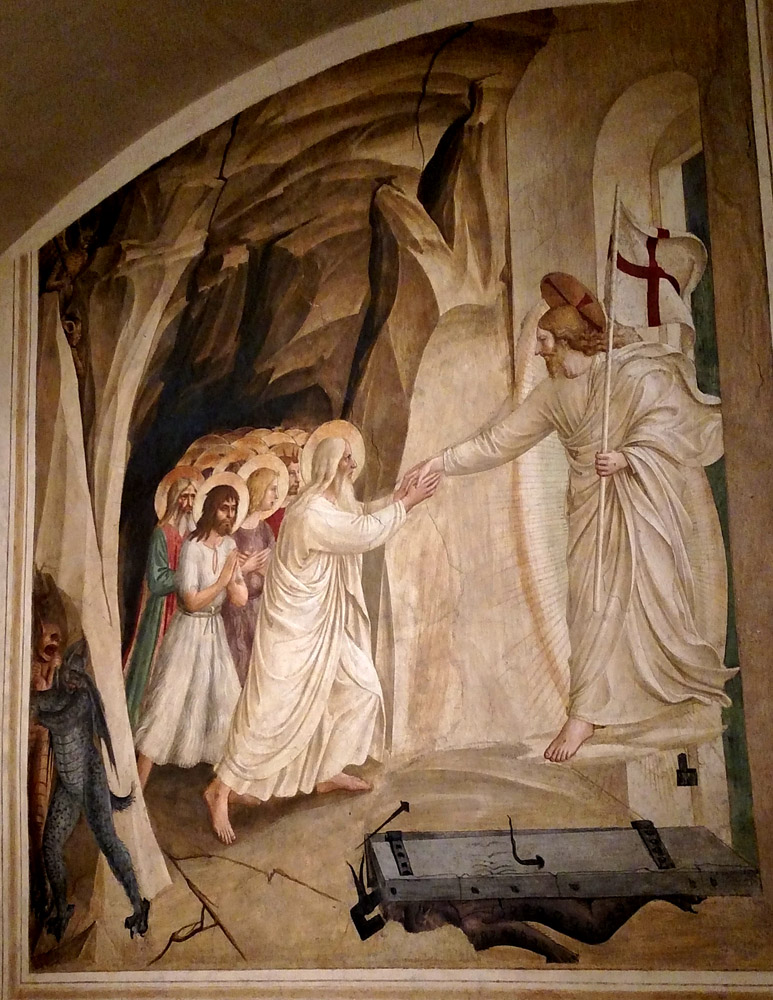
School of Fra Angelico
The Anastasis (Harrowing of Hell)
1440s
Fresco
Convent of San Marco, Florence, Italy
This fresco appears in one of the individual friars' cells in the convent. In several of these the scene is set in a stony milieu whose color
nearly matches that of the wall of the cell. This desire to unify the image with its environs may explain why the rescued souls do not emerge from a "hell mouth" (as in the West) or from sarcophagi set in the ground (as often in the East).
The artist draws largely on Orthodox iconography, in which Adam's advanced age bespeaks his status as the "old man" of the Pauline epistles.1 At his back are Eve and John the Baptist (in the shaggy garment). These two are often seen with Adam in Orthodox Anastases.
The artist also follows the Orthodox tradition in picturing the broken gate of Hell, although in the East Christ usually stands on the gate or on Satan, who in this version is seen slinking away to the left.
Eve is pictured so as to link her to the Virgin Mary. In the other cells on this floor of the convent Mary wears
the same purple we see here, and in the Annunciation image in the corridor
she crosses her arms just as Eve does in this fresco and has similar blonde hair. This reflects the Catholic teaching that just as Adam is "a figure of him who was to come" (Romans 5:14), so too "Eve, the mother of all the living (Genesis 3:20), is considered as a type of Mary who is the mother of all the living in the order of grace."2
View this image in full resolution.
Read more about the Harrowing of Hell.
Photographed at the site by Richard Stracke, shared under Attribution-NonCommercial-ShareAlike license.